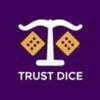I was playing (single deck) blackjack on the same table for four hours and witnessed the pit boss changing the deck almost every hour. Is that normal, or do the playing cards just plain wear out? Finally, what happens to playing cards after they leave the table? Jed C.
On average, casino cards retain their high gloss and snap for only an hour on a single deck game, two hours with double deck, or for an eight-hour shift if dealt from a shoe. Once used their allotted time, the old deck is taken off the game by the floorman, counted and sorted on the spot, then initialized as to the dealer, shift, and date.
The United States Playing Card Company in Cincinnati manufactures the vast majority of playing cards used today. Cards are made with the highest quality paper, laminated, and then go through an enameling process. A pit boss will change the cards to keep a quality deck on the game and to squelch hanky panky from sinister players. The favorite card style of most casinos is the Bee Diamond Back introduced by the U.S. Playing Card Company in 1902. These cards are used because they are more difficult for cardsharps to mark, and they provide more reference points for observation.
Many casinos send the old cards back to the manufacturer for slight alterations so they won’t be used by, again, sinister players. Once the cards are returned, the casino may sell them as a promotional item in the gift shop, or a philanthropic pit boss may give them away to asking patrons. Considering the price of a new deck of cards at Wal Mart, you might as well ask a pit boss for a free souvenir of your losses. Many will oblige.
Does the bet size ever influence the house advantage? For example, does in make any difference if you bet $5 on red in roulette or $500? Clay S.
None whatsoever, Clay. Every single casino game has a built-in edge working for the house. This house edge does not discriminate against the size of a wager. With your example, the casino will hold the same 5.26% advantage on a red wager in roulette whether you bet $5 or $500. Friend of mine invented a game in which the dealer could do just what you suggest-alter the odds during play. Chance that his invention will see casino life: Zilch, Zip, Nada.
The only blackjack I have played in the past was the single and double deck games in Reno, Nevada. Now three new casinos have opened in Detroit, and they offer only games dealt from a shoe where the player cannot touch the cards. I must admit there was a bit of confusion at first, because I didn’t know the correct hand signals. Plus, the dealer would not allow me to say I wanted a hit, stand or split. For the inexperienced, you might want to review the correct signals for blackjack on a shoe game. Marge G.
Some games, particularly blackjack, involve hand signals to signify how you want to play your cards. You must use hand signals since verbal instructions will not satisfy casino eye-in-the-sky security. They only monitor physical signals, Marge, not the conversation you have with the dealer.
Here are some easy hand signals when the cards are dealt face up from a shoe:
o Hit: Lightly tap the table with your hand.
o Stand: Wave your hand back and forth, palm down parallel to the table.
o Double/Split: Place your matching bet next to, but never on top of, your original wager. If you have two 4s or two 5s you should hold one finger up for doubling and two for splitting.
Gambling thought of the week: “Gambling is a principle inherent in nature.” -Edmund Burke, House of Commons speech (1780)




















